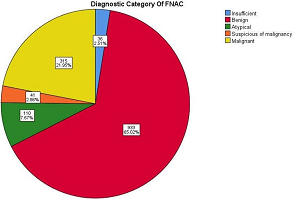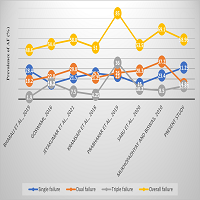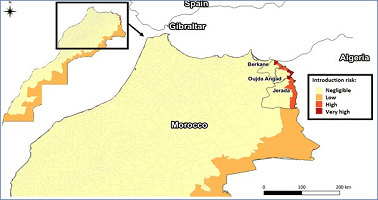Are we aware of the multiple cognitive consequences of being immersed in multilingual learning contexts? In this opinion article, some recent findings from the field of cognitive neuroscience and education has been discussed briefly, and the astonishing manner in which speaking a foreign language changes the human decision-making system and how this may link to a different degree of emotional reactivity in foreign-language contexts as compared to native-language scenarios has been elaborated. Finally, some insights have been provided about the recent innovative and inclusive educational methods based on mixing language at school and on the use of the native language as an educational tool in multilingual schools.
MULTILINGUAL WORLD, MULTILINGUAL BRAINS
In many countries worldwide, it is easy to find speakers of different languages within the same community. The presence of effective multilingualism has ceased to be an exception and has almost become a norm in the developed societies, or at least, a desirable milestone in the globalized world. Although, the presence of multiple languages in the same environment has become an everyday occurrence, it is not a trivial issue. In the recent years, an increasing body of experimental research has been witnessed—from multiple scientific fields and perspectives that has focused on investigating how to manage this multilingual reality. As has been discussed in the following paragraphs, numerous studies from the field of cognitive science have highlighted the benefits and drawbacks of multilingualism at various cognitive levels. Nevertheless, the number of studies exploring how multilingualism could be framed and accommodated within the educational context is far more limited.
The unstoppable progress of multilingualism has been accompanied by lively debates about the cognitive consequences of the frequent use of more than one language, both at the linguistic and non-linguistic levels.1,2,3,4,5,6,7,8,9,10,11 Even if this may sound strange to most of us, multilingualism was initially considered as a potentially harmful construct for the cognitive system. Luckily, this idea was rapidly discarded and multilingualism then began to be considered as the driving element for the cognitive advantages in basic psychological processes such as memory and attention.3,10 Furthermore, considering the techniques developed in the field of cognitive neuroscience, many recent studies stemming from the seminal work by Mechelli12 have focused on investigating the possible structural and neuroanatomical differences between multilinguals and monolinguals.13 This has raised the debate on the cognitive and cerebral consequences of multilingualism to a new dimension, opening doors to gaining a better understanding of the neuroarchitectural reconfiguration process that results from negotiating between more than one language in an active way.
MULTILINGUALISM IN EDUCATION
Beyond a mere dialectal Manichaeism of the true weight of multilingualism for the cognitive and cerebral system, there is an incipient area of study that is beginning to dismantle certain myths built around the inclusion of several languages in the education system. The present opinion article focuses on school-mediated multilingualism and it is aimed at providing a snapshot of some recent research lines that have emerged in the context of structured classroom multilingual environment. Many schools have been promoting the use of more than one language to communicate and teach, be it because of action plans marked by certain linguistic and educational policies or because of the complex globalized sociolinguistic reality that surrounds us. For this reason, it is relatively common to find individual schools, or even entire school systems, with a multilingual instruction method, with more than one vehicular language or lingua franca. The goal of these programs is to encourage children to become active and effective multilingual members of society. Nevertheless, the precise way in which this should be implemented in order to benefit all school children poses a challenge for many professionals specializing in cognitive science and educational neuroscience. What is the difference between processing native and non-native languages? At what stage of schooling is it appropriate to introduce students to a language other than their native one? How should literary instructions in different languages within a multilingual educational institution be organized? How should the language usage be managed within the classroom context? Trying to answer these questions often requires solving issues as complex as the essence of human language. Furthermore, these and many other questions constitute the roadmap for many researchers worldwide. Although today we are far from answering each of these issues, unequivocally and firmly, it should be emphasized that in the recent years, an increasing number of laboratories and research groups have begun pursuing research along these lines of inquiry.
EMOTIONAL DISTANCING
One of the most remarkable and surprising issues that the neuroscientific community has been confronted with, when exploring multilingualism, corresponds to the apparent emotional distance elicited by the use of a non-native language.14,15 While it is true that the precise origins and etiology of these differential affective and emotional effects are still uncertain, the scientific community agrees that there is an affective and emotional detachment in the use of a language that is foreign and not present in one’s usual environment.16 The differential effects go far beyond the mere individual self-report of speakers, as an exponentially increasing number of scientific studies are revealing the impact of foreign language use on the cognitive system, as well as the actions and decisions it takes. The decisions that multilingual people take,17 the perception of moral constructs—such as good and evil,18,19,20 and even self-perception21 are clearly affected by the language context a person is in. For example, imagine a native Spanish speaker in Spain, with an average knowledge of English as a foreign language acquired in an educational context. Research conducted mainly in the last few years has demonstrated that this person will most likely modify his pattern of decisional behavior and even aspects related to his perception of the world and himself depending on whether he is speaking in his native language, Spanish, or in his later-acquired foreign language, English. In this line, recent research14 has shown that this multilingual individual would take more deliberate decisions and suffer a reduced impact of intuition and of certain heuristics when confronted with a foreign-language scenario than when immersed in a native-language processing context. As Costa et al14(p.147) reviewed and summarized, the use of a foreign language “leads to a reduction of loss and risk aversion”, “reduces illusory correlations”, and “prompts more utilitarian choices than native-language processing”.
As has been mentioned before, the exact causes of this emotional distance—responsible for using a more rational system and less guided by affective-emotional impulses—are not completely clear. Different explanations of the effect of foreign language are usually discussed in the scientific literature, attempting to explain this phenomenon.14 On one hand, it is argued that the difficulty of speaking in a language other than one’s native language could operate as a form of stressor, saturating or overwhelming the cognitive system and partially impeding deeper, emotional processing of language.6,22 This is especially the case in situations that require fast responses. On the other hand, and not necessarily in opposition to the former account, it is argued that the way in which foreign languages are generally acquired could lead to this emotional distancing. For one, native languages are typically acquired in a family context, usually charged with emotions and generally linked to the affective content inherent to the relationship between the parents and their children. Meanwhile, foreign languages are generally acquired in institutionalized contexts, within academic and school spaces, in the form of a subject of study. Learners develop a certain level of emotional detachment to the language, possibly due to the disconnection that often occurs in foreign language classes between the authentic communicative and experiential end goal of foreign language learning and the way they are taught. This, perhaps combined with the cognitive cost of using a non-native language, makes speaking in a foreign language substantially change the way people relate to their environment and themselves. This way, multilingual speakers using a native and a foreign language suffer, to some extent, from a given type of diglossia. What this means is that each language tends to be compartmentalized into specific contexts of use, with its own relational and affective idiosyncrasy. It is not rare to find adult multilingual individuals who use one of the languages (e.g., the foreign language) predominantly at work, and the other language (e.g., the native one) at home, showing a marked imbalance between their personal and professional lives with respect to the language use. Therefore, multilingual persons often face an emotional diglossia that has strong immediate implications for basic psychological processes that regulate human behavior.
MINIMIZING EMOTIONAL DISTANCING
It seems intuitive to think that if the cause of emotional distancing is the way the educational system manages language instructions, then possible solutions should focus on that same process. This should naturally lead to actions targeted at the course of language learning in school. In spite of this, the great majority of scientific works so far have focused on exploring the foreign language effects on the linguistic interactions of adults.14 Furthermore, these studies have tried to cover up this logical gap by emphasizing that the scientifically oriented actions to understand how children learn foreign languages have not yet been carried out. That distance between scientific and educational realities is the true root of the problem. Nevertheless, on account of the development of these lines of research in the last few years, we are beginning to advance our knowledge and propose alternatives that seek to build bridges between the affective-emotional field and facilitate the learning of foreign languages in an academic context during the childhood.
How can we mitigate or minimize the effects of foreign languages to avoid the emotional distance they carry and elicit? While it is true that foreign languages are by definition foreign, and therefore distanced from the daily context of the general public who learn them, there are ways to bridge this gap. For example, one can correctly contextualize the student and the content, despite the physical distance sometimes being insurmountable. Or, seen from a different perspective, there are ways of not exacerbating the emotional distance, such as working towards the creation of relationships that counteract the stress imposed by communication in a non-native language. It can be specifically proposed that foreign language education should pursue the development of actions that reinforce emotional contents, which allow for the establishment of tight affective bonds with the foreign language, analogous to those developed with the native language during early childhood.
MIXING LANGUAGES IN THE CLASSROOM
At present, different international laboratories are exploring the way in which emotional diglossia can be remediated by introducing multiple languages within the same context.23 This trend is based on proposals of translanguaging, which in its more generic version, addresses the effective inclusion in the classroom context of all languages known to the different actors involved (mainly children and educators).24,25 This implies managing these languages in a way that allows for, and even encourages, language or code switching at any time. Although a priori, this type of methodological proposals may sound strange; however, it is plausible to think that they would help establish an adequate atmosphere without causing too much of anxiety. This more relaxed linguistic context could serve as a basis for unstressed communication in educational centers, allowing for free use of language, as a norm for these children, outside the classroom. In fact, an overwhelming number of studies have demonstrated the incredible ability of multilingual people to switch languages without exaggerated cognitive effort.26 Although, code switching entails a cognitive cost that has been repeatedly documented in the scientific literature,27 it should be noted that this cost does not seem to be directly reflected on learning, as will be explained in the following paragraphs. Moreover, it is well known that, in addition to explicit and manifest translation processes, multilingual persons also carry out implicit and seemingly automatic translation processes, transforming the written or verbal forms of one language into the other(s) language(s) in fractions of a second, often being unaware of this action.28,29,30,31,32 Considering that the cognitive cost of comprehension and production in more than one language does not seem to impact educational processes negatively, and that the multilingual brain automatically performs linguistic juggling between languages, it is possible that the inclusion of native languages in contexts that so far were exclusive to foreign languages could help dissipate emotional diglossia. In fact, recent studies suggest a close link between the strength of cross-language interactions with the native language and the performance in foreign language tests.33 Hence, in a nutshell, the use of the native language within foreign language contexts as a pedagogical and psychological tool, needs to be advocated.
When first confronted with proposals of this kind, a part of the educational community has pushed back this proposal under the incorrect premise that the mixing of languages in the classroom could lead to impoverished learning—be it of lower quality or less durable. In recent years, different research teams have been trying to demonstrate that these reticent postulates to language mixing lack scientific grounding, and an increasing number of studies are highlighting the error behind the “one subject-one language” rule that has prevailed in multilingual education systems.23,34 According to this unspoken maxim, each subject must respect the conscious and deliberate use of a single language, be it native or not, while prohibiting the use of any other language. Thus, if Science is taught in English within a Spanish-English bilingual school and Maths is taught in Spanish, the use of Spanish in Science class and English in Maths class would be penalized. The curious thing about this situation is that despite finding ourselves in educational contexts that give the global impression of being multilingual because of the use of two languages during the same school day, a perfect case of the diglossic reality is so described above. Diglossia makes these schools follow an educational system based on sequences of monolingual classes instead of a truly multilingual approach.
CONCLUSION
Luckily, the myth associated with the negative consequences of true multilingualism in the classroom has slowly been dismantled. Studies demonstrate that learning is not impeded in any way by the use of several vehicular languages. In this way, it is becoming clear that the rejection of language mixing lacks scientific support and, as we have said in some of these studies, in the absence of negative or harmful effects, “only the positive aspects of simultaneously using two languages remain, enabling bilingual learners to use their two languages in a naturalistic way”.23 In my opinion, the mixing of languages should be encouraged and implemented as a method to end situations of emotional and educational diglossia, taking advantage of the different languages spoken by a multilingual person as a psychopedagogical tool.
ACKNOWLEDGMENTS
This study was partially supported by grants from the Spanish Government (SEV-2015-0490 and PSI2015-65689-P), AThEME-613465 grant from the European Union, and by a 2016 BBVA Foundation Grant for Researchers and Cultural Creators.







